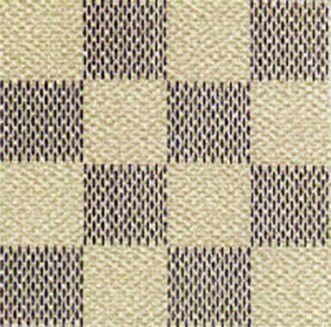If Louis Vuitton Cannot Prove Acquired Distinctiveness, Can You? Checking In After the Louis Vuitton ‘Damier Azur’ Case
What You Need to Know
Key takeaway #1
When demonstrating acquired distinctiveness through use, for EU trademarks (or international trademarks designating the EU) the geographical scope of the evidence should relate throughout the EU.
Key takeaway #2
While this does not mean that evidence should be submitted for each individual Member State of the EU, it does mean that the burden of proof lies with the trademark applicant or trademark holder. Evidence must be clearly presented as to convincingly explain the relevance of the evidence from one Member State to another Member State. Such regionalization and extrapolation between Member States should be given careful consideration.
Key takeaway #3
Furthermore, evidence must be specific and must demonstrate that the relevant public has been confronted with the trademark. Direct evidence (such as sworn statements or opinion polls) has been given greater weight than circumstantial evidence (such as media excerpts).
Client Alert | 18 min read | 05.16.23
While fashion lovers throughout the European Union will surely be familiar with the pattern, the General Court held that luxury fashion house Louis Vuitton failed to demonstrate that its trademark checkerboard ‘Damier Azur’ pattern, had acquired distinctiveness through use throughout the European Union.
This judgment highlights the difficulties in demonstrating acquired distinctiveness in relation to trademarks devoid of any inherent distinctive character (which is often the case for non-conventional trademarks such as pattern marks).
A. Background
In 2008, the company Louis Vuitton filed the following checkerboard pattern as an International trademark registration (designating i.a. the EU) for leather goods in class 18:

The mark was registered by the EU Intellectual Property Office (“EUIPO”) on 31 December 2009. Therefore, at that time, the EUIPO considered it to be sufficiently (intrinsically) distinctive.
On 25 June 2015, an application for a declaration of invalidity before the Cancellation Division of the EUIPO was initiated by a Polish national, based on several grounds of absolute invalidity. The EUIPO granted the application for a declaration of invalidity, as it found that the mark was devoid of intrinsic distinctive character and had not acquired distinctiveness through use between the date of registration and the application for a declaration of invalidity. Distinctive character acquired through use means that, although the sign initially lacks inherent distinctiveness with regard to the goods and services claimed, at least a significant part of the relevant public has, due to the use made of the trademark, come to see it as identifying the goods and/or services as originating from a particular undertaking. Thus, the sign has become capable of performing the function of a trademark, i.e. distinguishing goods and services from other undertakings.
Louis Vuitton appealed this decision before the Board of Appeal of the EUIPO, which confirmed the Cancellation Division’s decision to reject the mark.
Louis Vuitton subsequently appealed to the General Court of the European Union (“GC”). On 10 June 2020, the GC annulled the EUIPO's decision on the grounds that not all the relevant evidence submitted by Louis Vuitton had been examined. However, the GC maintained that the EUIPO’s Board of Appeal was correct in finding that the contested mark lacked inherent distinctive character. The case was subsequently remitted to the EUIPO’s Board of Appeal, in order to assess all the evidence in relation to distinctiveness through use. However, after re-examination, the Board of Appeal concluded – again – that Louis Vuitton had failed to demonstrate that its mark had acquired a distinctive character through use. It thus declared the trademark invalid.
Hoping to annul this decision and demonstrate its mark had acquired distinctiveness through use, Louis Vuitton filed another appeal before the GC. As the GC had previously ruled that the Board of Appeal was correct in finding that the contested mark lacked inherent distinctive character, the appeal was solely based on the argument that the pattern had acquired a distinctive character through the use.
On 19 October 2022, the GC dismissed the appeal and confirmed the cancellation of the trademark.
B. Decision by the General Court
Evidence examined by the General Court
The GC examined the evidence submitted with regard to the territories in which the Louis Vuitton did not have a store (i.e. Eastern European Member States). Louis Vuitton submitted numerous exhibits, including sales invoices, excerpts from catalogues, advertising campaigns, media coverage, evidence concerning the use of the contested mark on the internet, expert statements, opinion polls, the value and market share held by Louis Vuitton, … in order to support a finding of acquired distinctiveness.
A particularly noteworthy point is that Louis Vuitton attempted to prove acquired distinctive character via media coverage (catalogues, brochures and advertising campaigns), but the GC found that the evidence presented was not specific enough to demonstrate that the relevant public in the Member States concerned was exposed to its trademark. Louis Vuitton provided evidence that copies of magazines where distributed to professionals. The GC found that such distribution does not immediately translate to copies sold to consumers. Furthermore, making specific reference to printed media, the GC also noted that despite having mentions to various fashion magazines, all of which contained advertisements for goods bearing the trademarked pattern, the volume of copies distributed in the Member States concerned was small. Therefore, the GC concluded that such advertising campaigns did not reach a significant part of the relevant public in the Member States concerned.
Geographical scope of the evidence
Pursuant to settled case law, the acquisition of distinctive character of an EU trademark must be reported throughout the EU and not only in a substantial part or the majority of the territory of the EU. This, however, should not be interpreted overly restrictive. One does not have to produce evidence for each and every individual Member State in the European Union. Pursuant to the Chocoladefabriken Lindt & Sprüngli judgment by the Court of Justice, this would be unreasonable to require. Therefore, certain Member States can be grouped together through regionalization or extrapolation. Regionalization can be argued where (i) Member States are treated as one single market by economic operators who use the same distribution network and; (ii) where Member States present a geographic, cultural or linguistic proximity, as the relevant public of one Member State has a sufficient knowledge of the products and services that are present on the national market of the other Member State(s).
Louis Vuitton argued that “the analysis in the contested decision of the distinctive character acquired through use of the contested mark is detached from reality, since it ignores the fact that, throughout the European Union, consumers engage in homogeneous behavior as regards luxury brands, particularly because they travel and use the internet regularly”. The GC, however, rejected this line of argumentation for being too general, as Louis Vuitton failed to present precise and “substantiated evidence for that purpose”.
Furthermore, Louis Vuitton raised the argument that the distinctive character acquired through use of its trademark for certain Eastern European Member States, was corroborated by the geographical and cultural proximity. This argument failed, not because the GC found that there was no geographical and cultural proximity between those Member States, but because Louis Vuitton did not adduce any evidence to show that “the relevant Latvian and Lithuanian public had sufficient knowledge of the goods or services on the Polish and Swedish markets, or that the relevant Bulgarian, Slovenian or Slovakian public had such knowledge of the Romanian market”. Indeed, the burden of proof lies with the trademark applicant or -holderMoreover, the Court stated that Louis Vuitton had not alleged, let alone demonstrated that “it had grouped those Member States in the same distribution network or that it had treated them, particularly from a marketing strategy perspective, as if they constituted one and the same market”. It is therefore essential that the trademark applicant or -holder convincingly explains the relevance of the evidence for another Member State.
Similar comments apply for the opinion polls submitted by Louis Vuitton. The GC pointed out that the polls had queried the relevant public in France, Germany, the United Kingdom, Spain, Italy, Hungary, Poland, Romania, Sweden and the Netherlands. The GC held that findings from there territories could not be extrapolated for the east European Member States concerned.
Consequently, the GC ruled that the evidence presented was insufficient, in order to prove acquired distinctiveness in the Member States concerned.
C. Takeaways
This judgment demonstrates the difficulty for trademark applicants or -holders of proving acquired distinctiveness through use throughout the EU. The EUIPO and the higher courts are strict in their assessment and the evidential burden is significant. Particularly the geographical scope of evidence of distinctive character acquired through use, throughout the European Union proves to be a thorny issue, even for multinational organizations as Louis Vuitton.
In our view, the following practical considerations are worth pointing out:
- Acquired distinctiveness for the purposes must be evidenced throughout the EU. When attempting to demonstrate this, careful planning as regards which Member States will be covered and how to regionalize and/or extrapolate certain Member States, could be key and may become an important consideration for trademark strategy.
- Greater weight seems to be given to direct evidence by the GC, such as sworn statements from chambers of commerce and industry or other professional associations or public authorities, opinion polls/ market studies, and the use of the mark on the internet. As regards the latter, pursuant to settled case law, significance is given to the top-level domain name of the website concerned and its language. In contrast, advertising campaigns, catalogues and brochures are (merely) indications that the trademark has acquired distinctiveness through use.
- When utilizing surveys to prove acquired distinctiveness through use, the results must relate to evidence throughout the EU. The trademark applicant or -holder will have to demonstrate that such results are also significant for other comparable national markets, either because of the similar marketing strategies applied or because of geographical, cultural or linguistic proximity. The GC is strict and has found repeatably that surveys covering a few Member States were insufficient to prove acquired distinctiveness through use throughout the EU.
- Be specific when providing evidence. It should be made clear to the Courts/ administrative bodies that for instance these sales numbers relate to the specific trademark concerned and that the relevant public has been confronted with the trademark in question.
- It is furthermore paramount for the trademark applicant or -holders to consider the filing and the form of their trademark, as this should correspond with the use they wish to claim. Important questions are: “will I actually use the sign as registered?” and “for which goods and services is registration sought and will the trademark be genuinely used for such goods and/or services?” Strategizing on these points prior to registration, will avoid headaches later on. Ensuring that the trademark as filed corresponds with the trademark as used, will elevate any evidentiary problems later on.
- Lastly, if acquired distinctiveness can only be proven in a limited number of Member States, it might be advisable to obtain trademark protection either at a national level, or using an International Registration with individual designations in key territories.
Contacts
Insights
Client Alert | 10 min read | 12.24.25
Since the signing of Executive Order 14187 (“Protecting Children from Chemical & Surgical Mutilation”) in late January 2025, the Trump Administration has made its skeptical stance on gender-affirming care—especially regarding services provided to minors—clear.
Client Alert | 3 min read | 12.24.25
Keeping it Real: FTC Targets Fake Reviews in First Consumer Review Rule
Client Alert | 5 min read | 12.23.25
An ITAR-ly Critical Reminder of Cybersecurity Requirements: DOJ Settles with Swiss Automation, Inc.
Client Alert | 2 min read | 12.23.25
Record-Setting False Claims Act Settlement Highlights DOJ Commitment to Customs Enforcement




